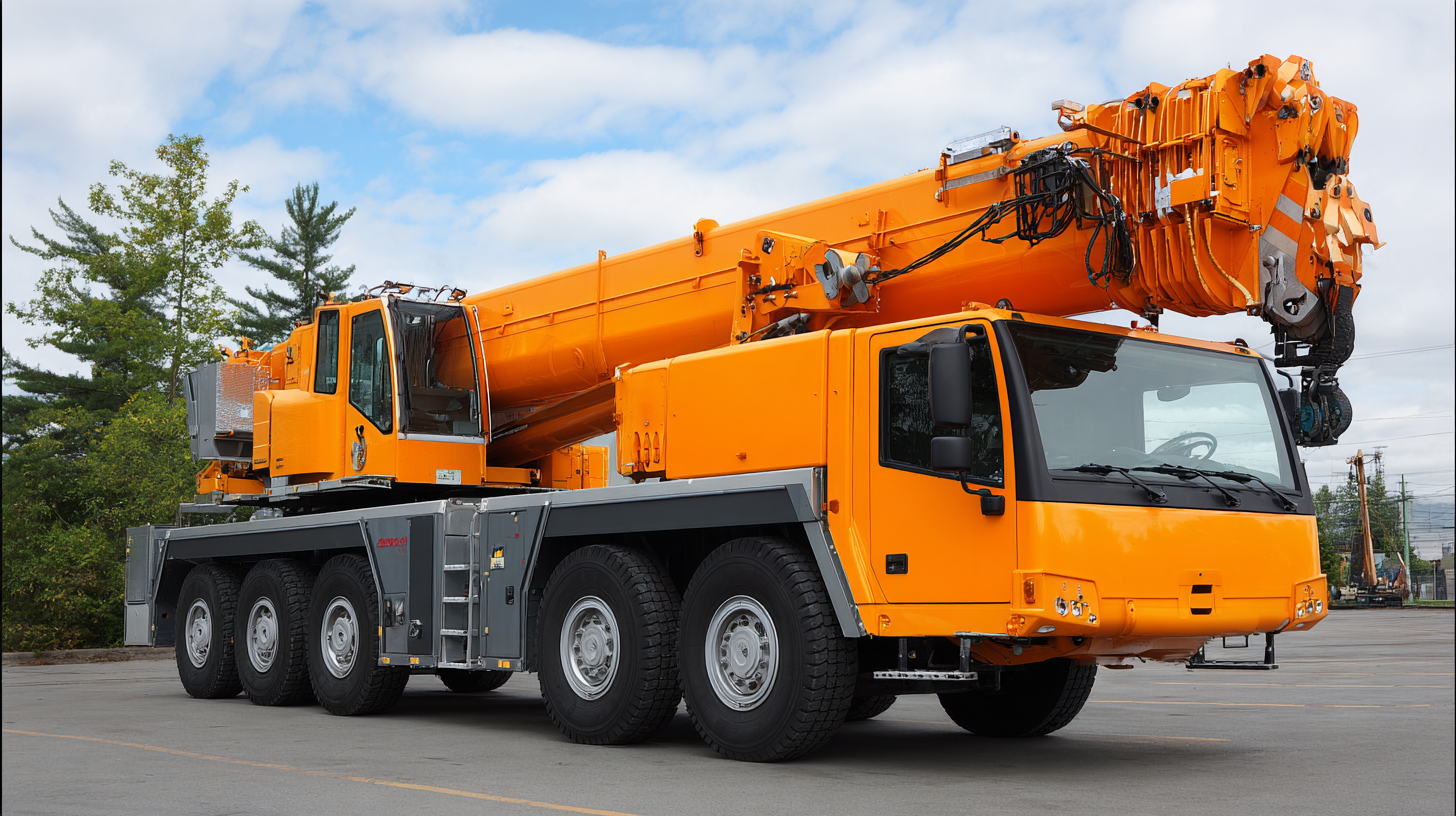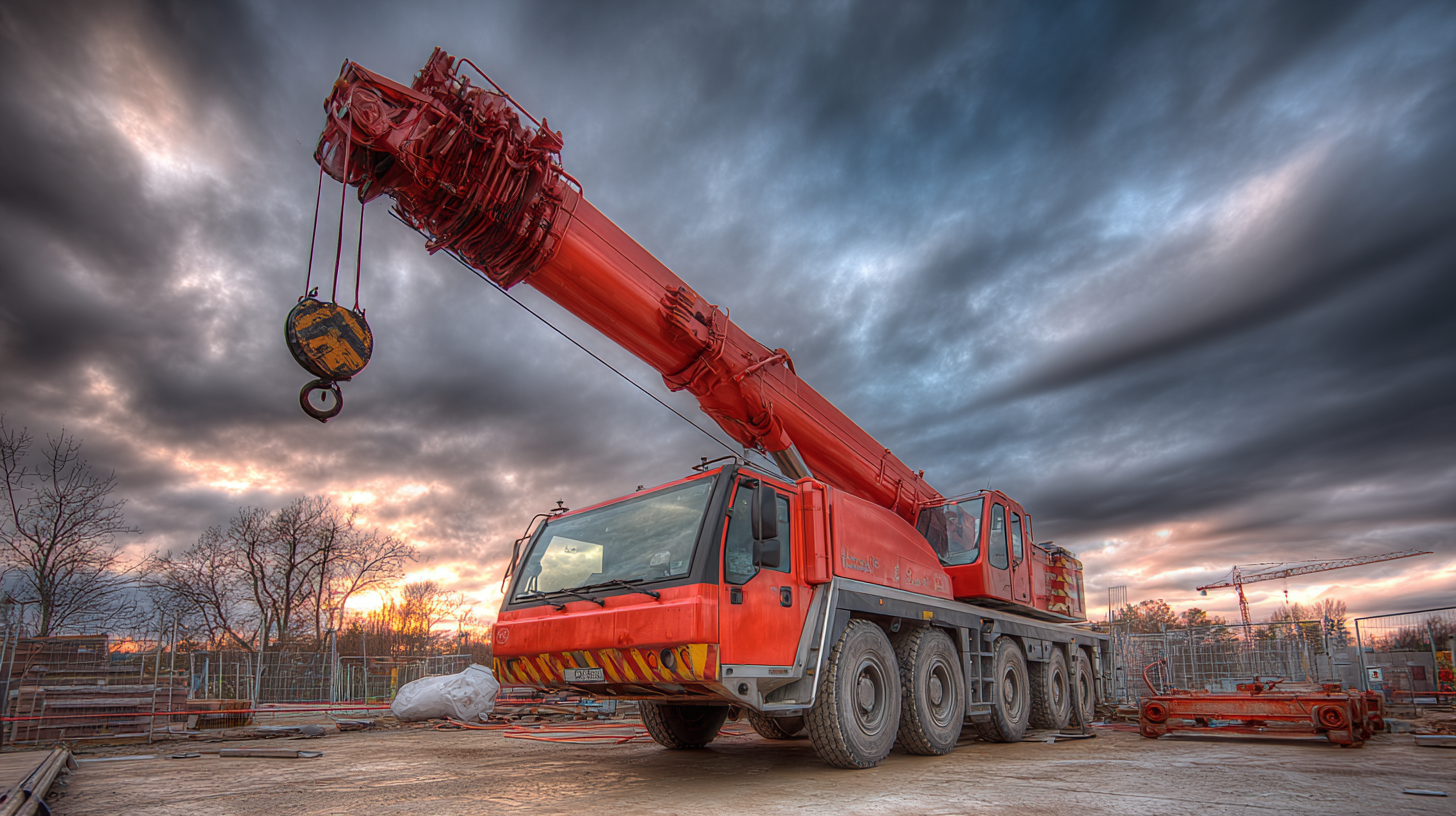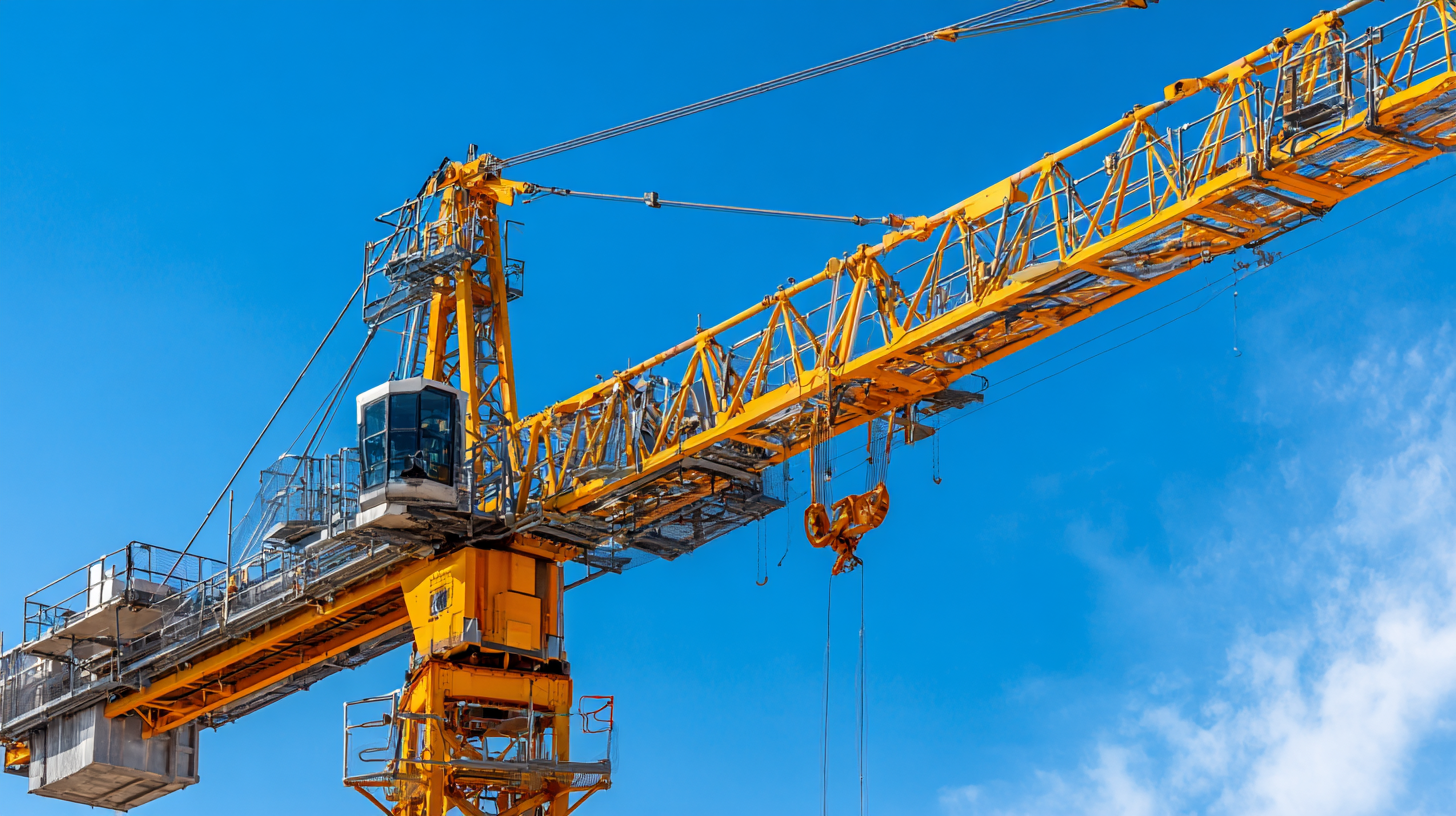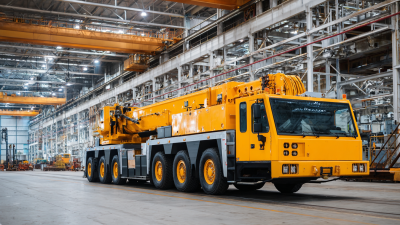Leave Your Message
-
Phone
-
E-mail
-
WhatsApp
When it comes to heavy lifting equipment, the telescoping crane stands out for its versatility and efficiency in various construction and industrial applications. Unlike traditional cranes, a telescoping crane features extendable arms that can reach great heights and tight spaces, making it ideal for a variety of lifting needs. Whether you’re lifting materials to significant elevations or maneuvering in crowded job sites, the telescoping crane is designed to adapt to the challenge with precision and ease. This blog will delve into five compelling reasons to choose a telescoping crane, highlighting the benefits that make it an essential piece of equipment for any lifting task. From enhanced mobility to increased safety features, discover why this innovative machinery could be the key to optimizing your lifting operations and improving overall productivity.

Telescoping cranes offer several key advantages over traditional cranes, making them an ideal choice for lifting needs in various projects. One prominent benefit is their versatility. These cranes can extend and retract their booms, allowing them to navigate tight spaces and adjust to different lifting heights effortlessly. As seen in recent bridge building projects, a telescoping crane’s ability to reach varied elevations while maintaining stability is crucial for precise operations.
Another significant advantage is improved productivity. The efficiency of a telescoping crane minimizes setup time and streamlines the work process. This was clearly demonstrated in recent projects where a contractor utilized a telescopic crane to effectively place materials in challenging positions without the delays often associated with standard cranes.
Tips for maximizing the use of a telescoping crane include ensuring proper training for operators to handle the equipment safely and effectively. Additionally, conducting regular maintenance checks can significantly enhance the crane’s performance and longevity. By leveraging these tips, project managers can achieve optimal results while minimizing risks and downtime.
| Advantages | Telescoping Cranes | Traditional Cranes |
|---|---|---|
| Compact Design | Easy to maneuver in tight spaces | Larger footprint requires more space |
| Versatility | Can be used for various lifting tasks | Limited to specific applications |
| Reduced Setup Time | Quick to set up and dismantle | Longer setup time due to complexity |
| Improved Reach | Extended reach for high-lift tasks | Limited lifting height |
| Cost-effective | Lower operating costs and maintenance | Higher long-term costs |
When it comes to lifting equipment, versatility is a crucial factor that can significantly enhance operational efficiency.
Telescoping cranes stand out due to their ability to adapt to various job sites and unique lifting requirements.
Their extendable booms provide the flexibility needed to navigate tight spaces and reach high elevations, making them suitable for diverse industries, including construction, shipping, and event setup.
This adaptability allows operators to tackle a range of tasks with a single piece of equipment, reducing the need for multiple cranes and streamlining operations.
Another key advantage of telescoping cranes is their capability to quickly adjust to different lifting conditions.
Whether the job site requires lifting heavy materials on uneven terrain or maneuvering around obstacles, these cranes can extend or retract their booms effortlessly.
Moreover, their compact design enables them to be transported easily between locations, saving both time and resources.
This versatility ensures that operators can focus on completing their tasks efficiently, regardless of the challenges posed by varying work environments.

When considering lifting equipment for tight spaces, a telescoping crane stands out as an optimal choice due to its enhanced reach and accessibility. Unlike conventional cranes that require significant horizontal clearance, telescoping cranes can extend their boom to navigate over and around obstacles. This feature allows operators to position loads precisely where they are needed without necessitating extensive maneuvering or repositioning of the crane itself. As a result, projects in confined job sites, such as urban construction or maintenance tasks, become far more efficient.

Additionally, the versatility of telescoping cranes is a game-changer in areas with limited access. Their ability to extend both vertically and horizontally means that they can easily reach materials in cramped environments, such as between buildings or under low-hanging structures. This level of adaptability not only saves time but also improves safety, as operators can avoid risky shortcuts that might otherwise be required with less maneuverable lifting equipment. Ultimately, the enhanced reach and accessibility of telescoping cranes make them an indispensable tool for projects tackling the challenges of tight spaces.
When it comes to lifting heavy loads in construction and industrial settings, safety is paramount for both operators and bystanders. Telescoping cranes have emerged as a preferred choice due to their enhanced safety features, which effectively minimize risks associated with lifting operations. One of the key advantages of telescoping cranes is their ability to extend their reach while maintaining stability. This design allows operators to position themselves further away from hazardous areas, reducing the likelihood of accidents and injuries.
Additionally, modern telescoping cranes come equipped with advanced safety technologies, such as load moment indicators and automated stabilization systems. These features provide real-time data on load capacities and help operators make informed decisions during lifts. Furthermore, the cranes often include built-in alarms that alert operators to unsafe conditions, ensuring that preventive measures can be taken immediately. By prioritizing the safety of both the operators and those in the surrounding area, telescoping cranes not only improve operational efficiency but also foster a safer working environment.
When considering lifting operations, cost-effectiveness is a crucial factor that can't be overlooked. Telescoping cranes are designed to maximize value by offering flexibility and efficiency in various lifting scenarios. Their extendable arms enable them to reach greater heights and distances without the need for additional equipment, allowing operators to complete jobs faster and with fewer resources. This inherent versatility reduces the overall cost of labor and equipment rental, making telescoping cranes a financially smart choice for businesses.
Moreover, the maintenance and operational costs of telescoping cranes are often lower compared to traditional cranes. The design minimizes wear and tear, leading to decreased downtime and fewer repairs. This means that companies can allocate their budgets more effectively, investing in additional projects or improving other areas of their operations. By leveraging the cost-effective nature of telescoping cranes, organizations can enhance their overall productivity while keeping expenditures in check, creating a win-win situation for both short-term tasks and long-term growth.






